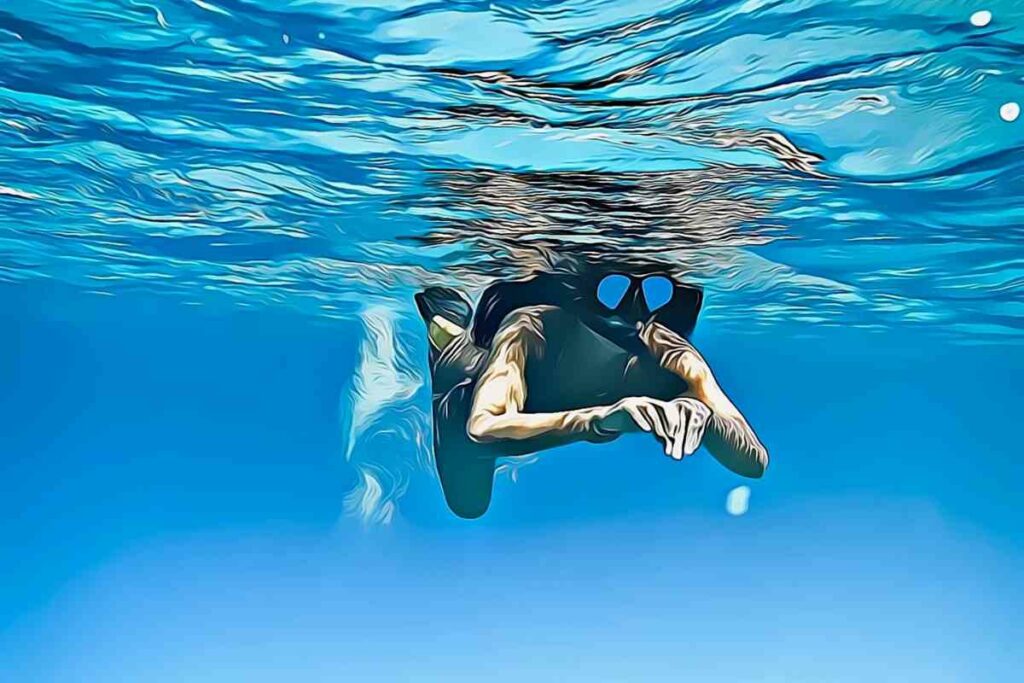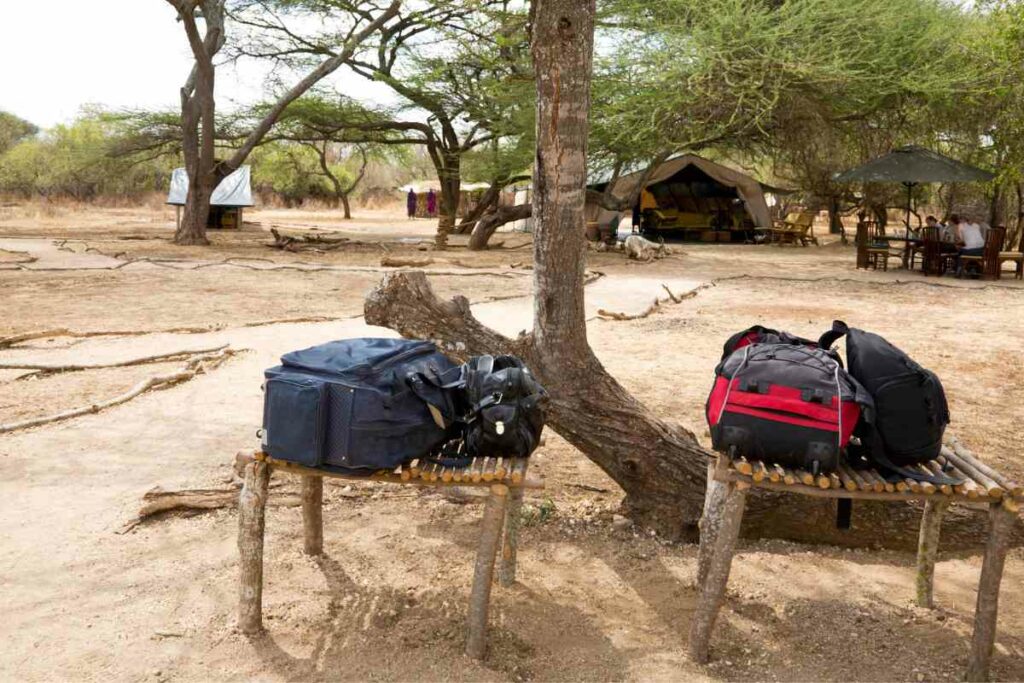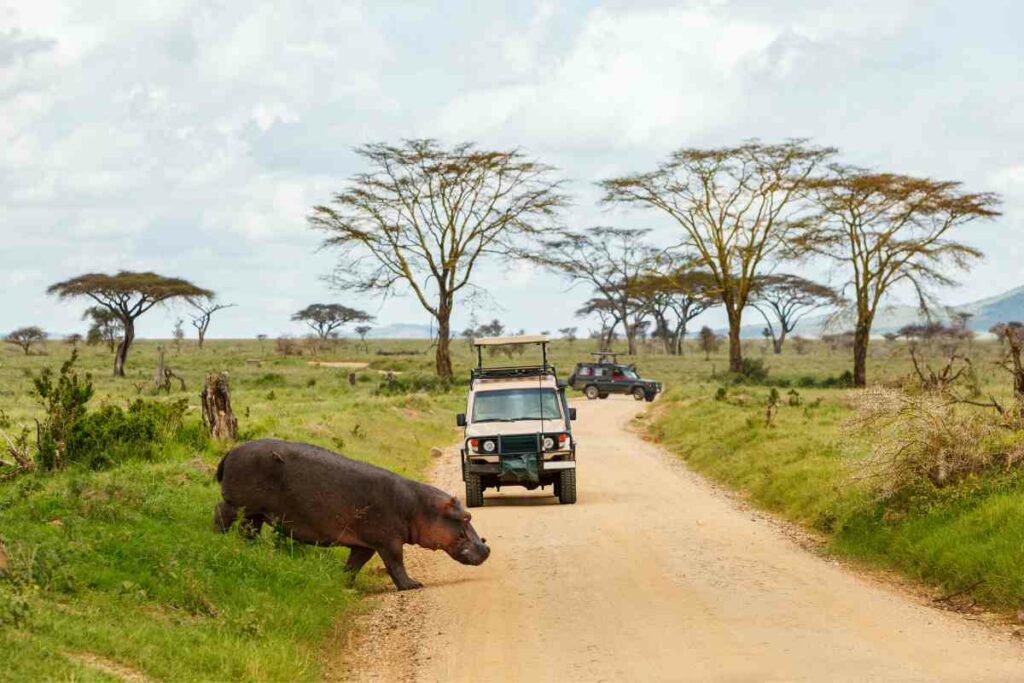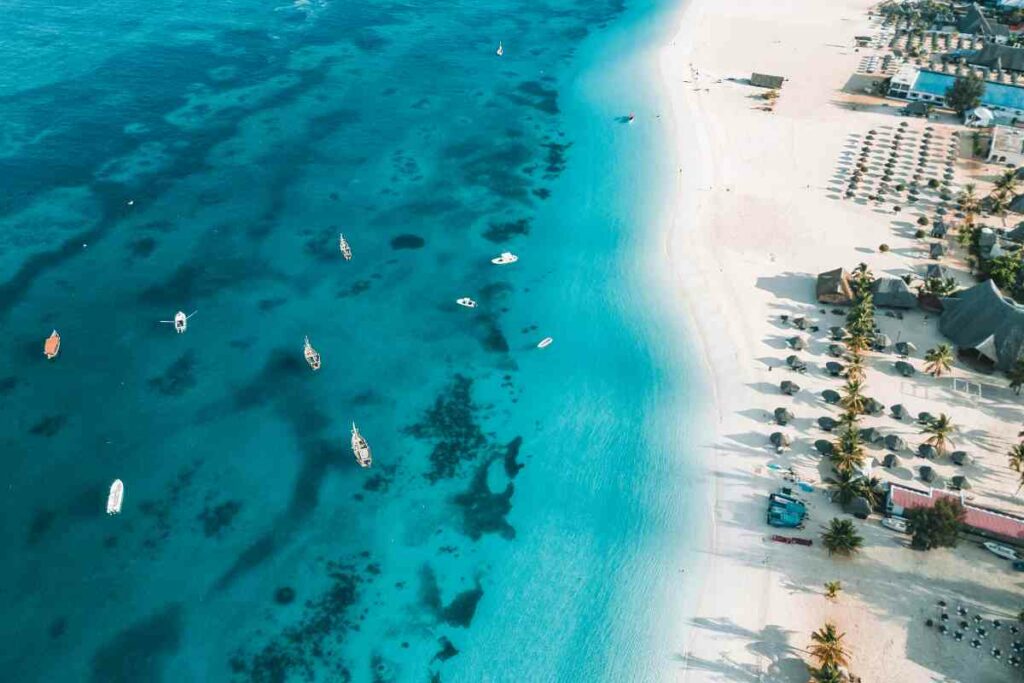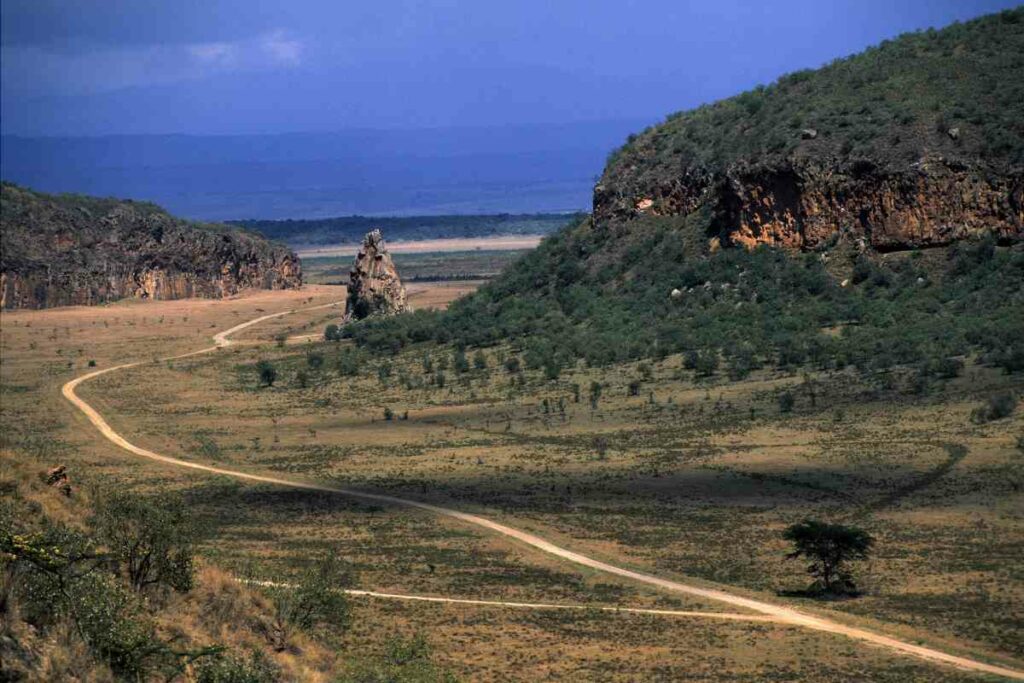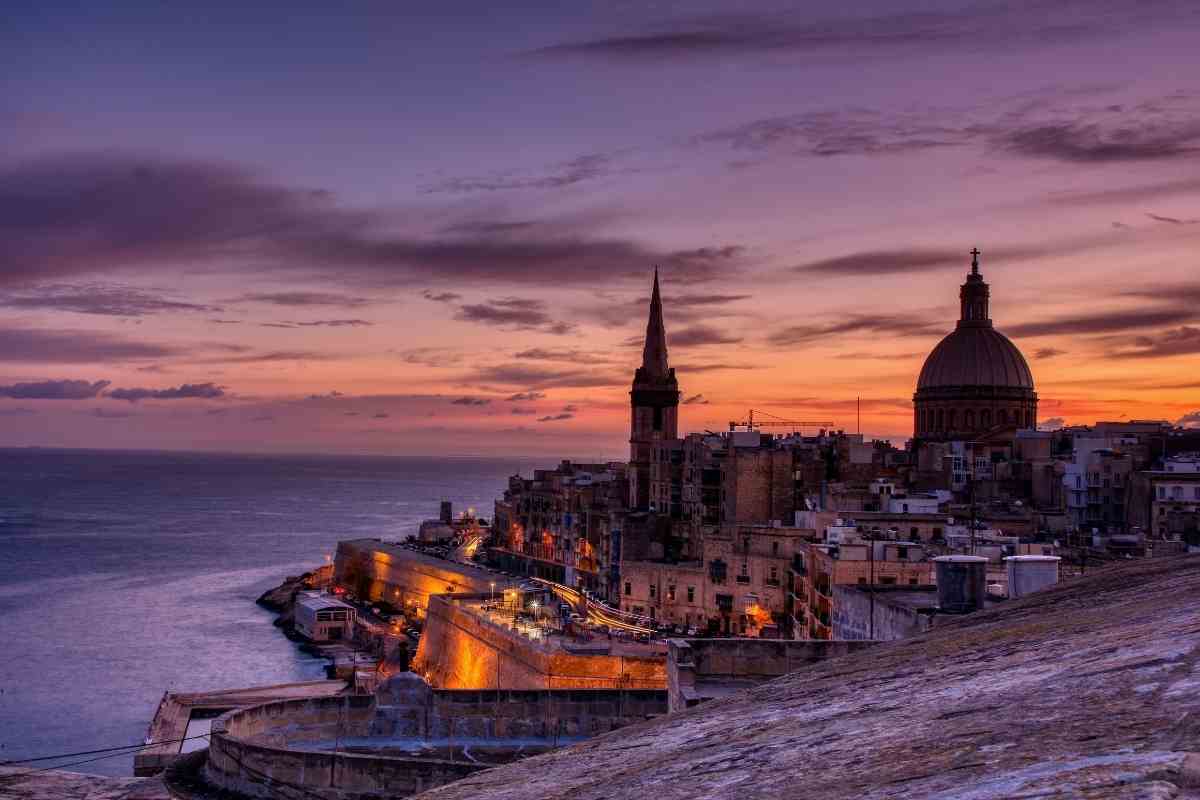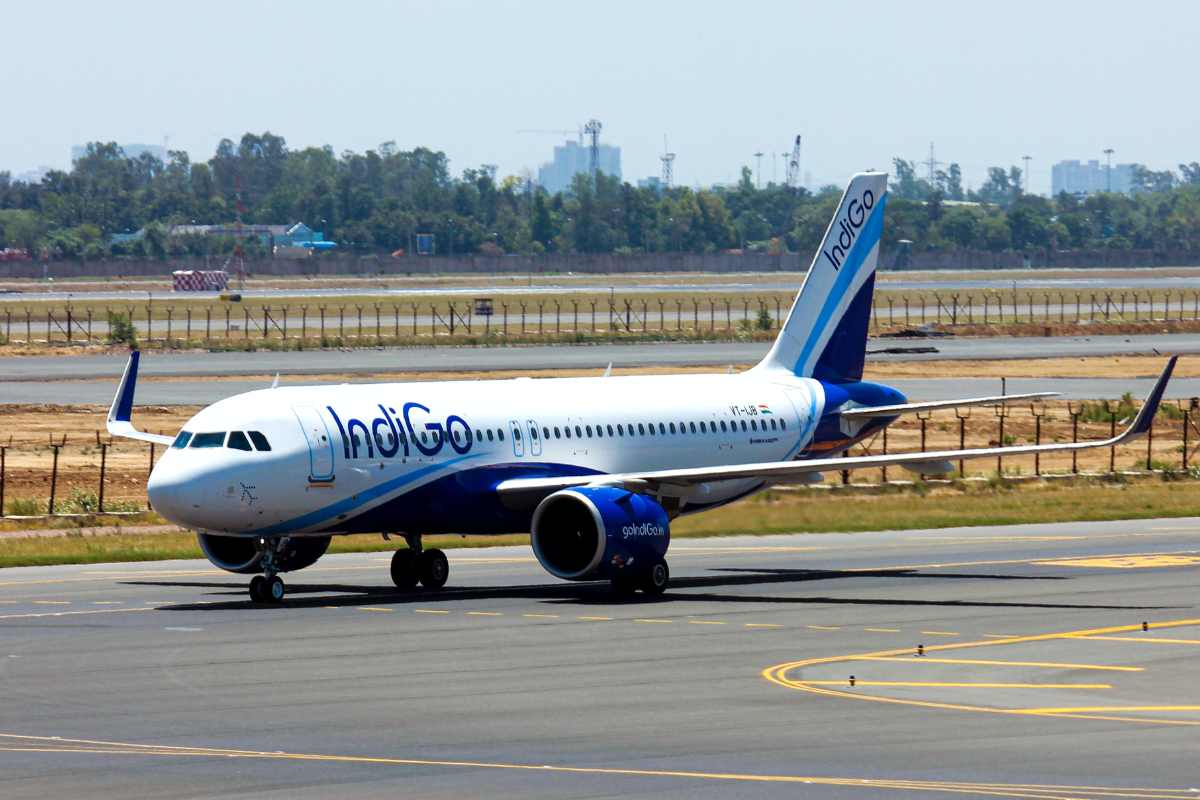Nairobi is East Africa’s technological, recreational, and education hub.
With so much to offer, exploring the vast city can be daunting, especially for foreign visitors.
Here are some amazing things you can do while visiting the green city in the sun.
1. A Safari Within a City – Nairobi National Park
Nairobi National Park is a mere 10km (7 miles) from the CBD, hence the accolade as the ‘the World’s Only Wildlife Capital.’
Gazetted in 1947 as a national park, the 117 square kilometer park is famous for its game viewing and panoramic landscape on the backdrop of the city scrapers
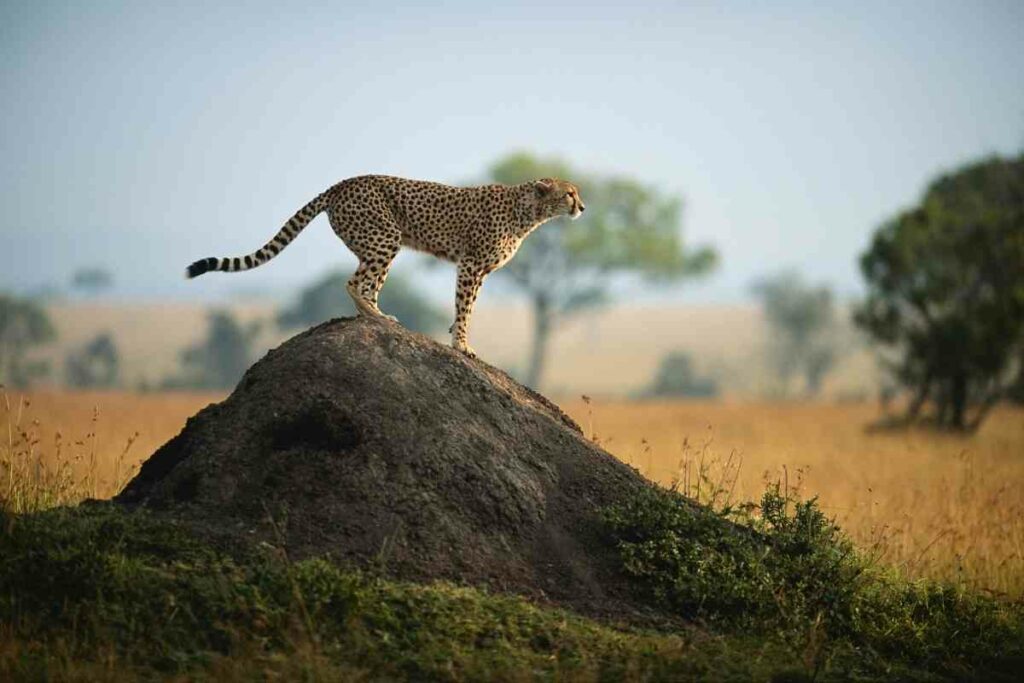
The park is home to four of the Big Five:
- lions
- buffaloes
- leopards
- and the endangered black rhinoceros
Elephants are within the confines of sanctuaries but do not roam freely in the open grass plains of the park.
Other large animals you can easily spot in the park include:
- hippos
- zebras
- cheetahs
- giraffes
- spotted hyenas
- and wildebeests
Besides, over 400 bird species inhabit the scattered acacia bushes and the vast savannah.
While the park is bustling all year long, the December to March dry season offers the best safari viewing experience.
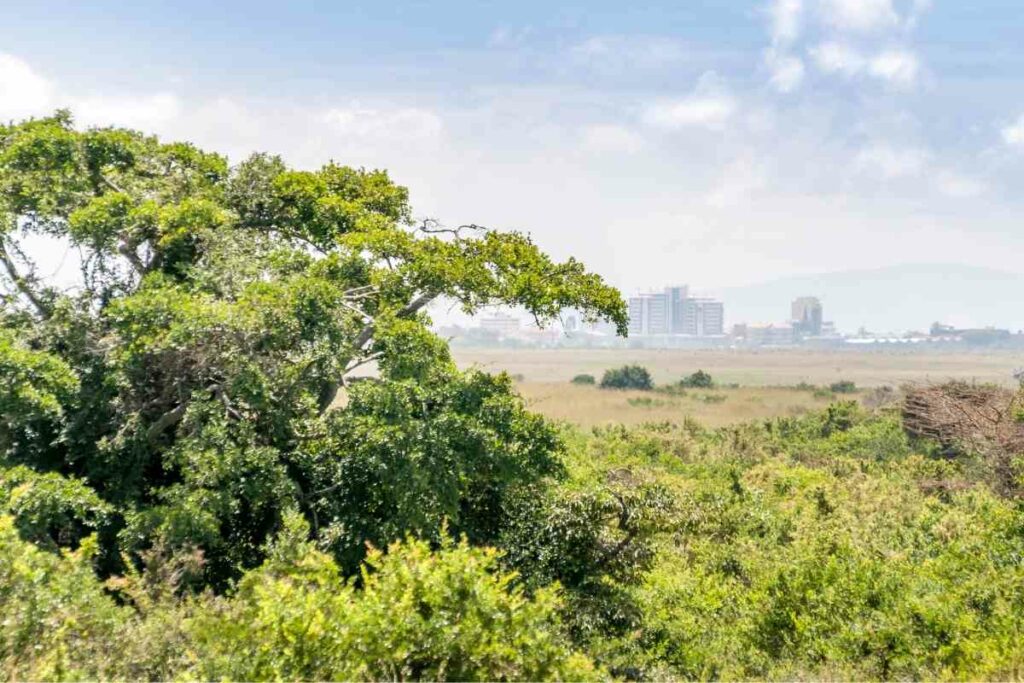
Set off early in the morning or late in the evening when most of the predators do their hunts.
Hiring a guide for this safari would be best to help you spot animals and navigate the terrain, especially in the wet season.
Entry
US$60 for adults and US$20 for kids. Residents pay KSh500 and Ksh215, respectively.
The park went cashless, and you can pay via Mpesa (a local mobile banking platform) or debit cards (Visa and MasterCard) at the gates.
Alternatively – You make direct deposits to the KWS US dollar account and come with the banking slip on your visit.
2. A Forest Picnic – Karura Forest
Karura Forest is a large, serene urban forest located 20 minutes from the CBD off Kiambu Road.
It remains largely undeveloped as per the wishes of the former patron and Nobel Peace Laureate, Prof Wangari Maathai.
Visit the site if you have plenty of time because there is so much to do!
The forest has numerous designated trails for nature walks, cycling, jogging, dog walking, and horse riding.
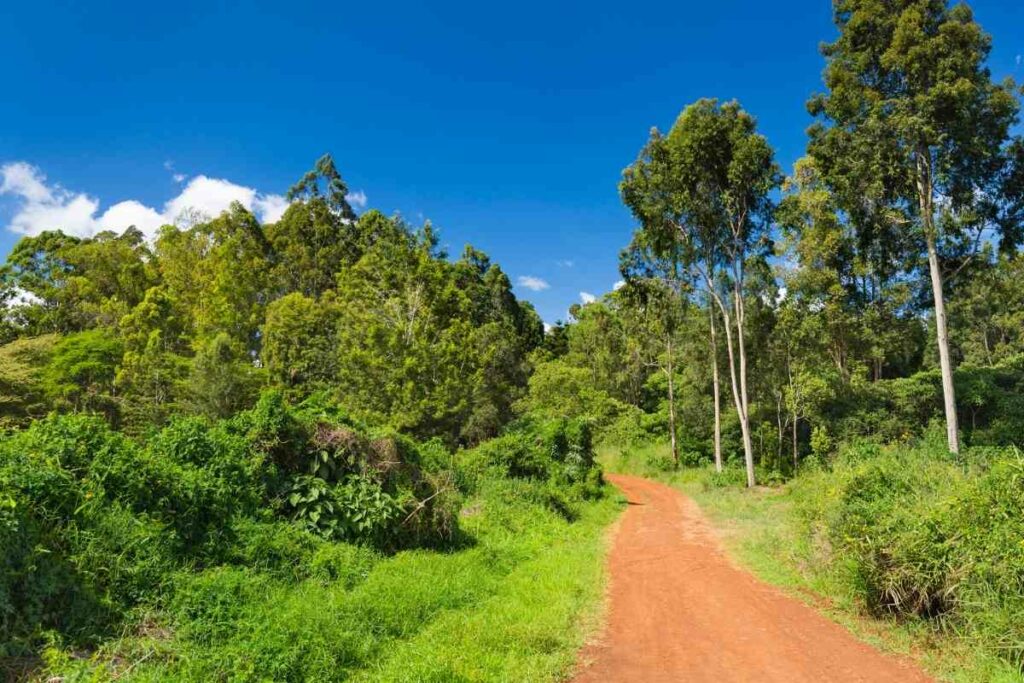
It is a popular picnic spot with five designated sites where you enjoy the fresh crisp air and gentle breeze as you watch birds and monkeys on the tree lines.
Three tennis courts, a football pitch, yoga platforms, and a children’s obstacle course add to the flurry of activities a visit to the forest offers.
If you don’t have the luxury of spending the whole day here, we recommend you use the Karura Forest Eco-Tours.
The tour guide’s in-depth knowledge of the vast forest ensures you visit all the best spots to maximize your experience.
Even Better – The forest has immaculate landscapes, including the Karura Waterfall ecosystem, a haven for photographers.
If you believe you took the best shots, you can participate in the annual FKF Photo Competitions to win cash prizes.
Karura is a strictly Plastic Free Zone; it would be best not to carry any on your visit.
Make sure to book a day before to use the tennis courts or the picnic sites during weekends.
Entry
Karara Forest is open daily from 06:00 a.m. to 6:00 p.m. Adults (above 12 years) pay Ksh200 if residents and Ksh600(US$6) for non-residents, while children pay Ksh100 and Ksh100(US$3), respectively. Picnic fees are Ksh100 for kids and Ksh150 for adults.
3. Adopt a Baby Elephant – Nairobi Elephant Orphanage
The orphanage also goes by Nairobi Nursery or the David Sheldrick Wildlife Trust (SWT).
Established in 1977, the Langata-based sanctuary has successfully raised 263 elephants to maturity, the most in the world.
SWT helps guard wildlife habitats while raising awareness of the threats to these elephants; poaching, drought, and human conflict.
You can adopt an elephant for as low as US$50 a year to help rehabilitate them.
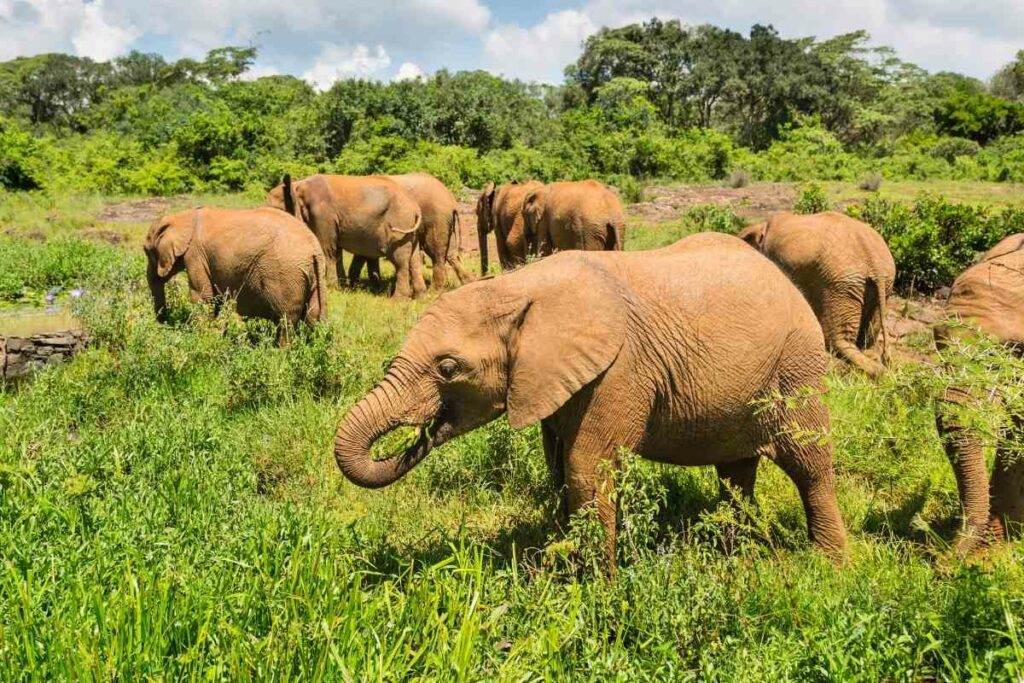
The process is quite simple, and you can conveniently do it on your phone. Besides an adoption certificate and other goodies, you also get an extra hour to view the elephants up and close.
The trust invites you back into the orphanage from 5–6 p.m. as the animals retire to bed after a long day out in the wild.
Keep In Mind – The nursery is a 30-minute drive (10.3 miles) from the CBD, where you get to witness the orphaned elephants being fed by keepers before they go out to play.
They love the nearby pool, where they roll in the mud and spray themselves with water using their trunks. It is such a heart-warming sight considering ivory hunting persists.
Entry
The visiting hours for the public are strictly 11 a.m. to 12 p.m., and you have to make your booking earlier to get a vacancy.
Adopting parents have an additional visitation hour from 5p.m to 6 p.m.
The entry fee is US$15/ Ksh 1,500 for foreign adults (>12 years) and US$5/Ksh 500 for children.
4. Explore Kenyan Culture – Bomas of Kenya
The Bomas of Kenya is located 10 km from the CBD along Langata Road.
Established in 1971, it seeks to preserve, maintain and promote Kenya’s rich, diverse cultural values.
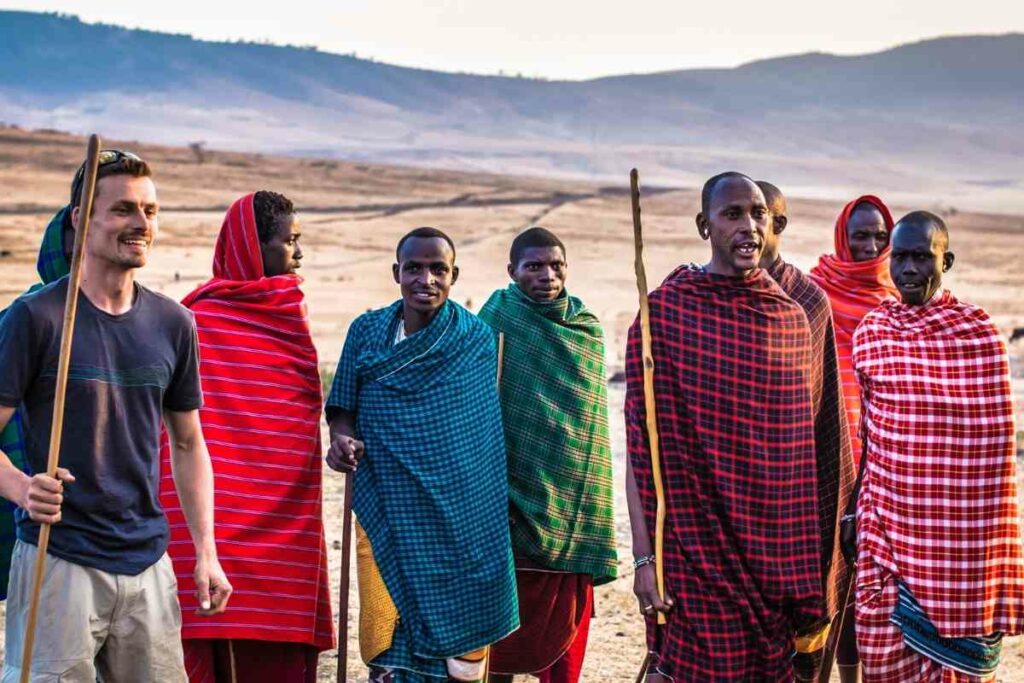
As a result, the Bomas is quite literally a living museum, with a beehive of activity all day long.
Spend your morning touring the bomas, traditional homestead replicas of the ethnic Kenyan tribes.
You can also head to the Gallery Section to view various cultural artifacts collected from communities across the country.
The Bomas of Kenya Library and Multimedia Center is there if you want to research more on different aspects of Kenyan culture.
At Midday – Head to the Utamaduni Restaurant to enjoy sumptuous native cuisines served in their traditional setups.
The restaurant has a serene, natural ambiance overlooking the Nairobi National Park for an unforgettable dining experience.
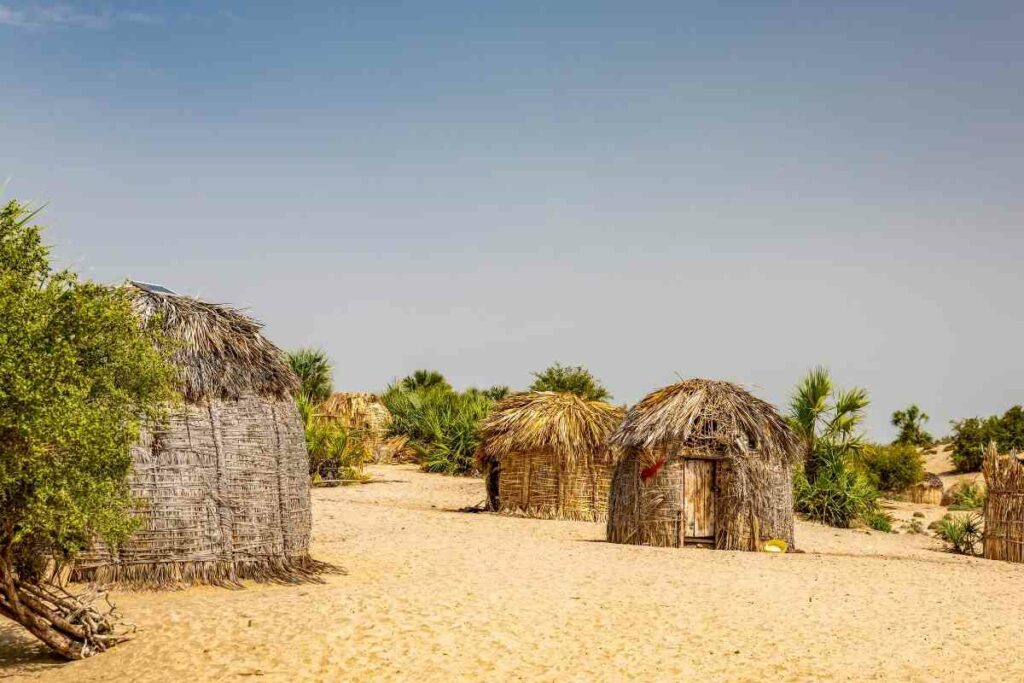

Finish your visit in the evening by enjoying tantalizing daily cultural musicals, dances, and acrobatic performances in the 3500-seater auditorium.
The Harambee Dancers are the most notable dance troupe and attract the biggest crowds.
Entry
Non-resident rates are Ksh1,000 ($10) for adults and Ksh500 (US$5) for children and students.
Residents pay Ksh300 and KSh100, while locals pay Ksh200 and Ksh50 for each age group.
The homesteads are open daily from 10 a.m. to 6 p.m.
The cultural performances start from 2:30 p.m. to 4:00 p.m. Monday to Friday, while on weekends & public holidays, they run from 3:30 p.m. to 5:15 p.m.
The library opens Monday to Friday from 9.00 a.m. to 4.00 p.m. but is closed on weekends and public holidays.
5. Bird’s Eye View of the Capital – Kenyatta International Conference Centre
Once the tallest skyscraper in Kenya, the KICC is one of the most notable landmarks in the city.
The cylindrical rooftop is located on the 28th floor and offers the best viewpoint of the Nairobi Metropolitan area’s picturesque skyline.
You can see the new Nairobi Expressway snaking through the city, the lush green Nairobi National Park to the East to the affluent high-rises of Westlands and Upper Hill.
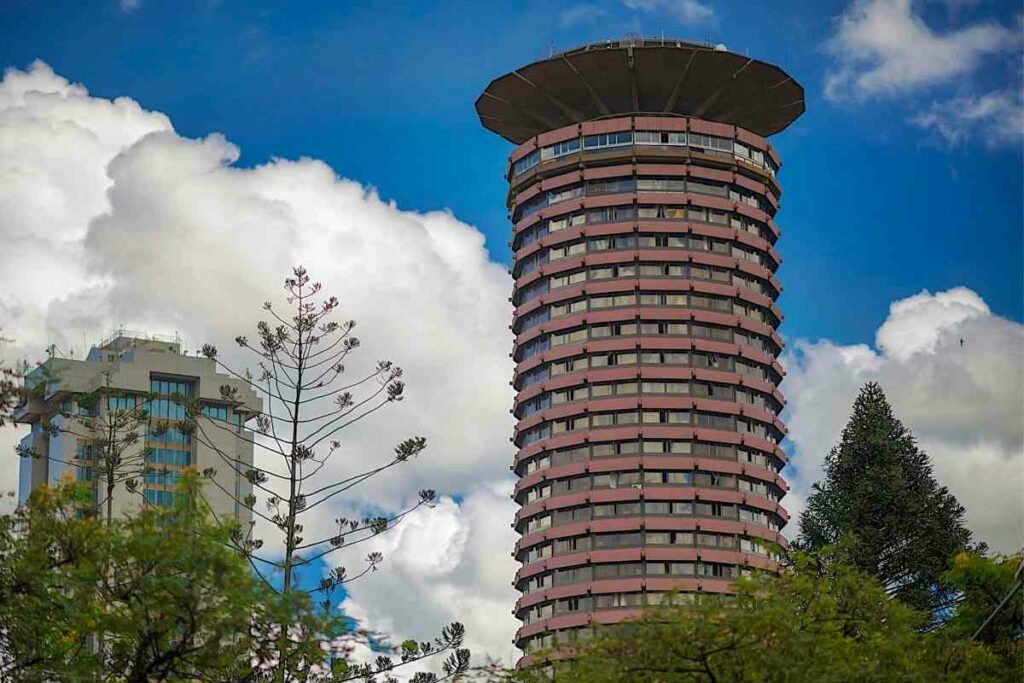

On a good day with clear skies, you can see the iconic Mt. Kenya to the north and the Ngong Hills southwest of the city.
Due to its height, the rooftop is usually windy, and it would be best to keep an eye on your kids from standing too close to the edges.
KICC is heavily guarded, don’t mind the multiple security checks, and remember to carry your passport with you.
Entry
KICC is open from 8.00 a.m. to 5.00 p.m. daily.
You will pay $5 for grownups and $2 for kids to access the rooftop, while the natives pay Ksh200 and Ksh50, respectively.
We Recommend – The best day to visit is on the weekend, preferably on a sunny Sunday morning.
The crowds are thinner, and you can soak in the fantastic views before people start trooping in the afternoon.
6. Shop for Souvenirs – Maasai Market
The Maasai Market is an affordable open-air market to shop for beautiful African crafts.
You can find anything from clothes, fabrics, hand-made jewelry, shoes, and bags to paintings and curios.



All the products are brightly colored with intricate prints and designs.
The most popular items are:
- shukas
- the Maasai blanket
- kiondos
- woven baskets
- beaded sandals
- and themed bracelets
With so many beautiful handcrafted African antiques on offer, have some discipline, or you might spend way above your budget.
Sharpen your bargaining tips or have a local guide help you navigate the market, as the vendors usually mark up the prices when selling to tourists.
Entry
The market operates 8 a.m. to 6 p.m. from Tuesday to Sunday across different locations in the city.
- Tuesday: Kijabe Street in the City Centre opposite the Norfolk Hotel
- Wednesday: Capital Centre along Mombasa Road
- Thursday: Junction Mall along Ngong Road
- Friday: Village Market in Gigiri
- Saturday: The High Court Parking Lot in the City Center, opposite Re-Insurance Plaza
- Sunday: Yaya Centre along Argwings Kodhek Road
Always use local currency to make your purchases.
It would be best also to have it in smaller denominations, i.e., Ksh50, 100, 200, 500, to avoid fleecing.
7. Hand Feeding Giraffes – The Nairobi Giraffe Centre
Also known as the African Fund for Endangered Wildlife (AFEW), the Centre was established in 1979 as a breeding center to help repopulate the then-endangered Rothschild’s giraffe.
It opened its doors to the public in 1983 as a giraffe sanctuary and environmental education center for the youth.
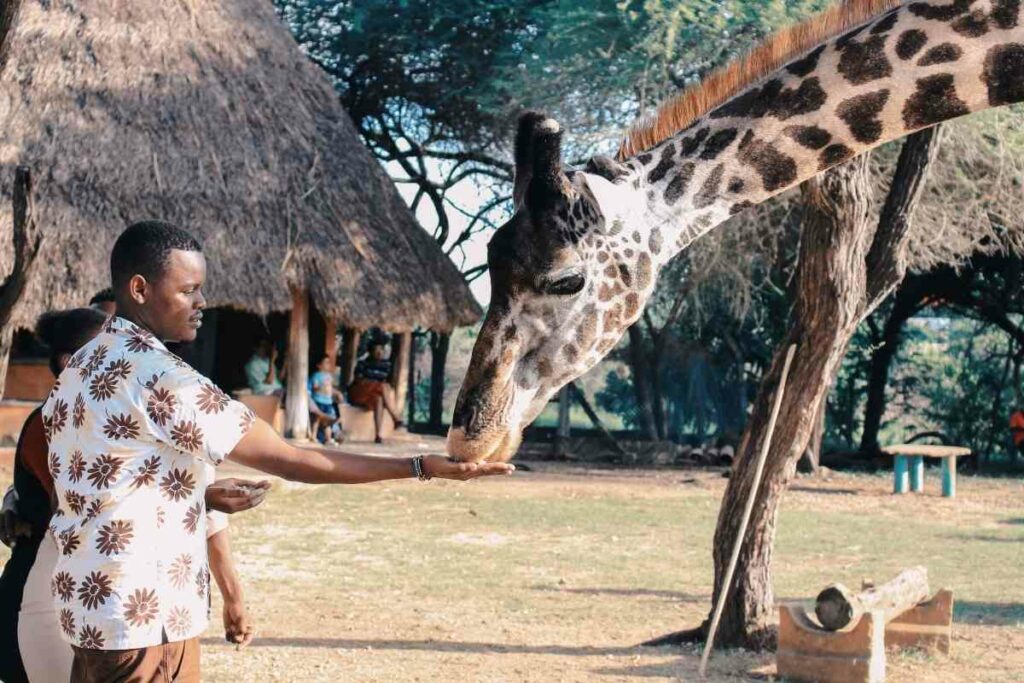

To date, thousands of schoolchildren visit the facility yearly at no charge.
A raised feeding platform allows you to give out some food pallets to the giraffes from the palm of your hand.
Cool, right? If it’s your first time, don’t worry, the khaki-clad educators are always there to guide you.
More often, the giraffes will lean in to kiss you, and you can have a closer look at the intricate color patterns on their hides.
Besides the giraffes, you can take a nature walk in the sanctuary.
On the course of the 1.5-kilometer trail, you can spot several species of birds, warthogs, dik-diks, and squirrels.
The tea house serves chilled beverages for you to catch a breath after the stroll. It has a breathtaking view of the surrounding Ngong Hills.
Wind up your tour of the facility by visiting the Daisy Zoovenir Shop.
There are many excellent nature-themed curios and artifacts to take home.
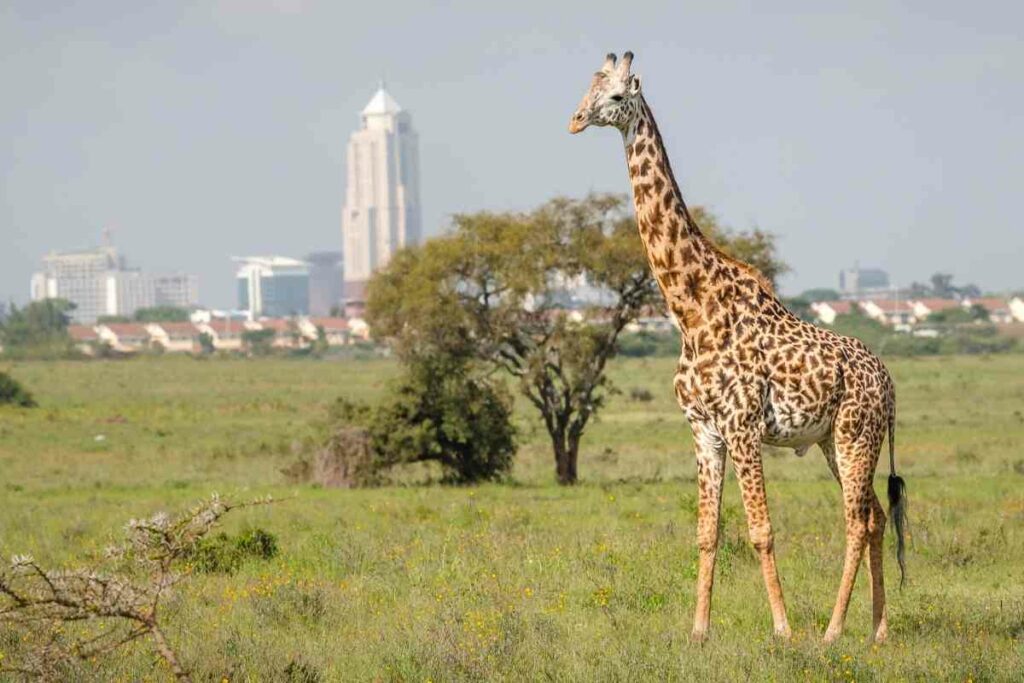

A massive chunk of the proceeds from sales is plowed back into the center, and your purchase will help conservation efforts.
After a 2 to 3-hour stint at the sanctuary, you can head back to the City Center 15 kms (9.3mi) away.
Entry
The Giraffe Centre gates along Nyumbi Road open daily from 9:00 a.m. to 5:00 p.m. all year round.
On Weekends the place is usually packed, and it would be best to go during the week.
Entry fees for non-resident adults are Ksh1,500 (US$15.00) and Ksh750 ($7.50) for children (3-12 years of age).
Students below 23 years also qualify for the child rate provided they produce a valid student ID. No cash payments, so ensure you load your M-Pesa, Visa, or MasterCard account.
8. Get Up and Close with Wildlife – The Nairobi Safari Walk
The Nairobi Safari Park is a recreational and conservation center located 7km from the city off Langata Road.
It was created to showcase the rich biodiversity in Kenya and create awareness of the benefits of protecting the natural environment and wildlife activities.
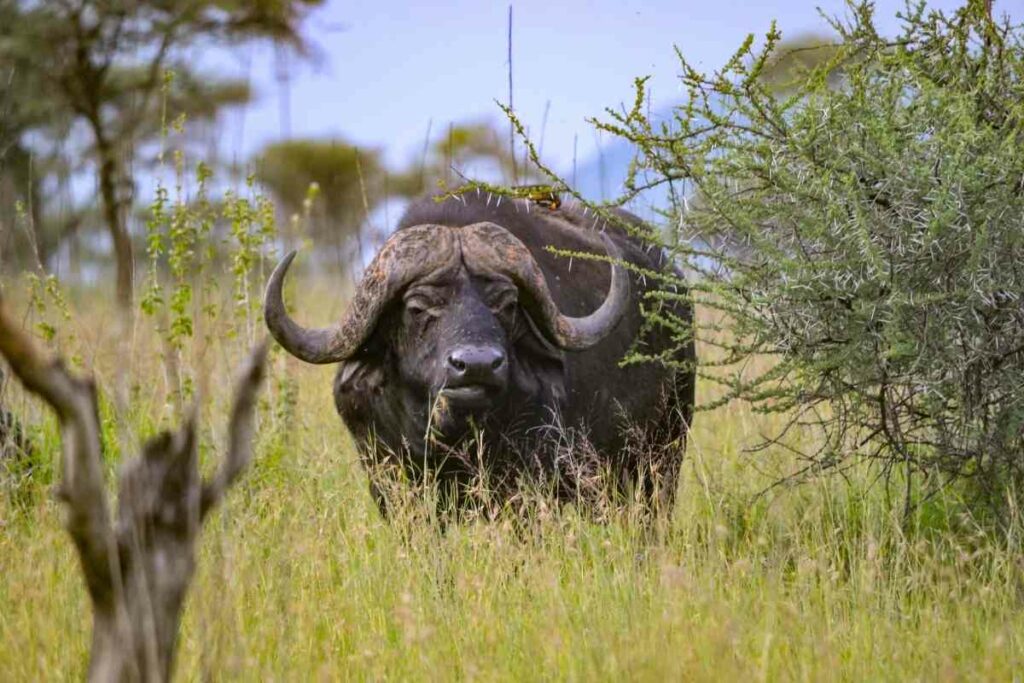

The place is lovely and serene, making for a pleasant outdoor experience. It also has a children’s museum for learning excursions.
The scenic walking experience can take from two to 6 hours, depending on your schedule.
Through the raised wooden boardwalk, enjoy 27 acres of uninterrupted views of unique plants and animals which are almost extinct or threatened.
Some rare animals you can spot include the:
- pygmy hippo
- bongo
- white rhino
- Columbus monkey
- and albino zebra
Other animals found in the facility are the big cats, Thomson gazelles, impalas, spotted hyenas, cape buffalos, antelopes, and the white-bearded gnus.
Besides, it boasts a wide variety of bird and insect species. Over 100,000 bird enthusiasts flock in every year to learn and photograph them.
Entry
The Safari walk is open daily, including public holidays, from 8;30 a.m. to 5.30 p.m.
Park entry fees are US$25 for adults and US$15 for kids.
9. Face your Fears – The Nairobi Snake Park
the Nairobi Snake Park is 10 minutes from the city center off Museum Hill Road, adjacent to the Nairobi National Museum.
Opened to the public in 1961, it is a popular tourist attraction but serves as a sanctuary to preserve snakes and other reptiles rescued across the country.
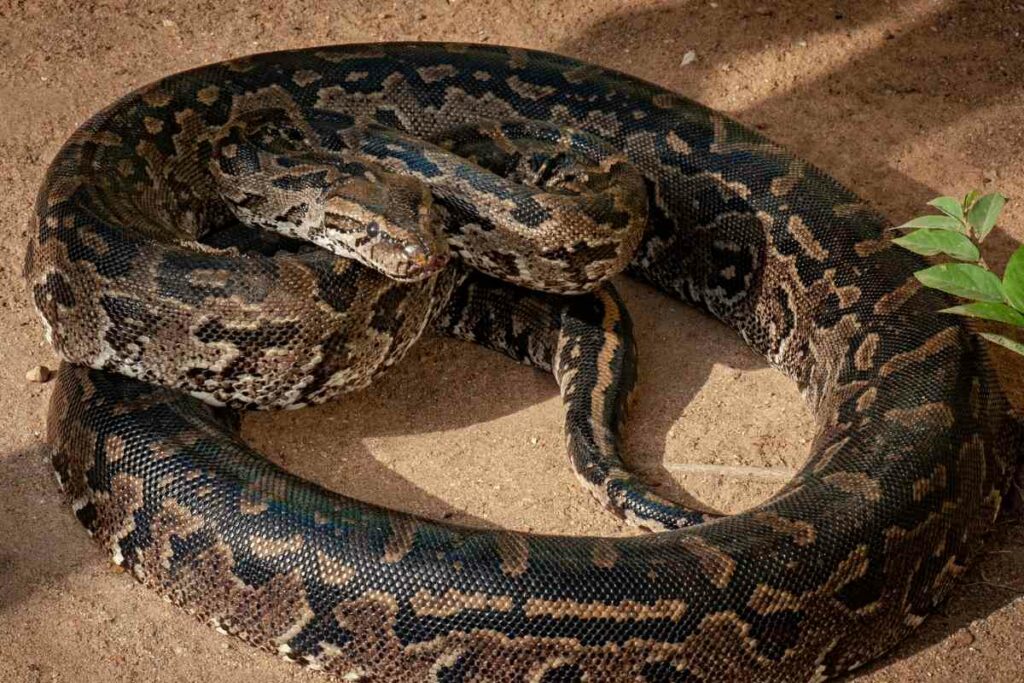

Over 20 species of snakes are in the park, including:
- puff adders
- green mambas
- Egyptian Cobras
- and African Rock Pythons
The most notable ones are the Black Mamba (Africa’s longest venomous snake) and the Gaboon viper (4 cm fangs, longest in the world).
For the brave-hearted, the snake experts may allow you to handle and take pictures with juvenile pythons and house snakes.
Seeing a snake coiled on someone’s torso is petrifying, but it makes for an unforgettable experience.
Away from the snakes, the park has a number of amphibians and reptiles in its vicinity.
What to Expect? Several crocodile species, freshwater terrapins(turtles), tortoises, chameleons, and native East African coral fish are present in the park.
You can view these animals across the numerous aquariums in the park or the caged botanical gardens.
Entry
The park is open daily from 8:30 a.m. to 5:30 p.m.
You will pay US$15 and US$10 for a non-resident adult and child, respectively. This fee also includes entry into the Nairobi National Museum, providing value for money.
10. A Family Picnic – The Nairobi Arboretum
The Nairobi Arboretum is a serene botanical garden located 3km from the city center off State House Road.
Despite being situated in the leafy suburbs of Kilimani, the park is affordable. It is an ideal family getaway since it is less congested than Uhuru Park, which is right in the city.
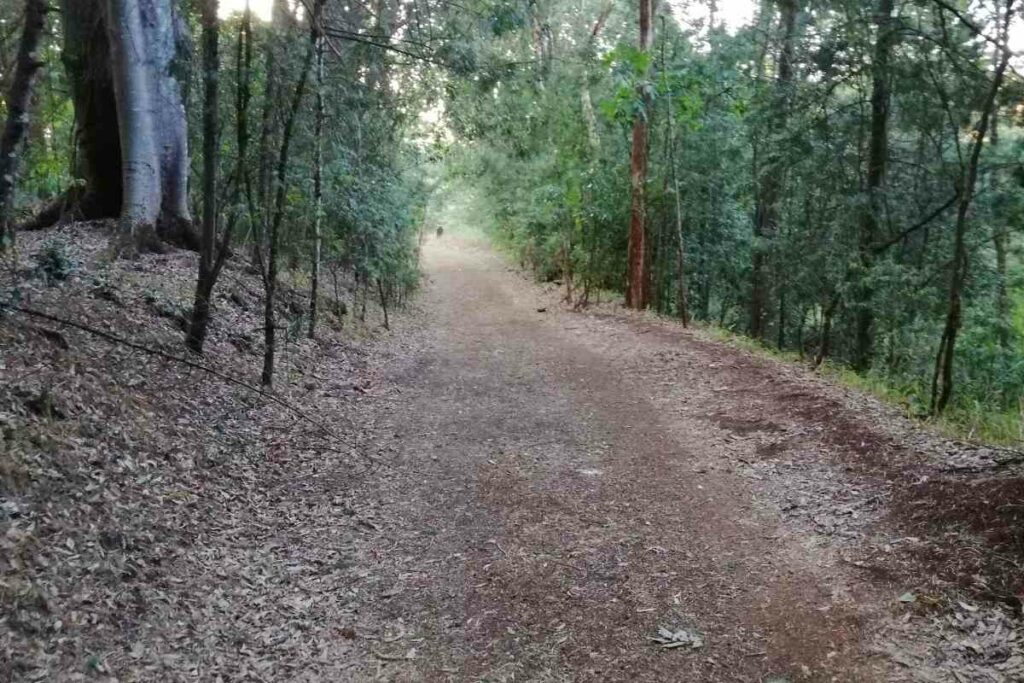

The grounds are well groomed, perfect for picnics and a flurry of family activities.
You can play soccer, fly kites, chase butterflies and hide and seek. Bond over a meal, but be wary of the mischievous Sykes and Vervet monkeys that live in the surrounding trees.
Nairobi Arboretum has nature trails along the 30.4 hectares of wooded landscape for walking, jogging, and bike riding.
You can also spot multiple bird species, monkeys swinging in the trees, four-toed hedgehogs, porcupines, squirrels, and the Greater galago.
It is also home to over 350 species of indigenous and exotic plants.
Entry
The Arboretum is open 365 days a year, from 6 a.m. to 6 p.m.
Entry charges are Ksh65 (US$0.65) for all adults, irrespective of residency, and Ksh27 (US$0.27) for children.
While they don’t take cash, you can pay using credit cards or Mpesa.
11. Honorable Mention – the Nairobi NightLife
Nairobi has many entertainment joints, and you will have no trouble finding a place to dance the night away.
In the city center alone, over 30 clubs light up the city’s night sky.
Exclusive clubs in Nairobi are usually in the Kilimani and Westlands suburbs.
The most famous clubs frequented by tourists are K1 Lounge and the Alchemist.
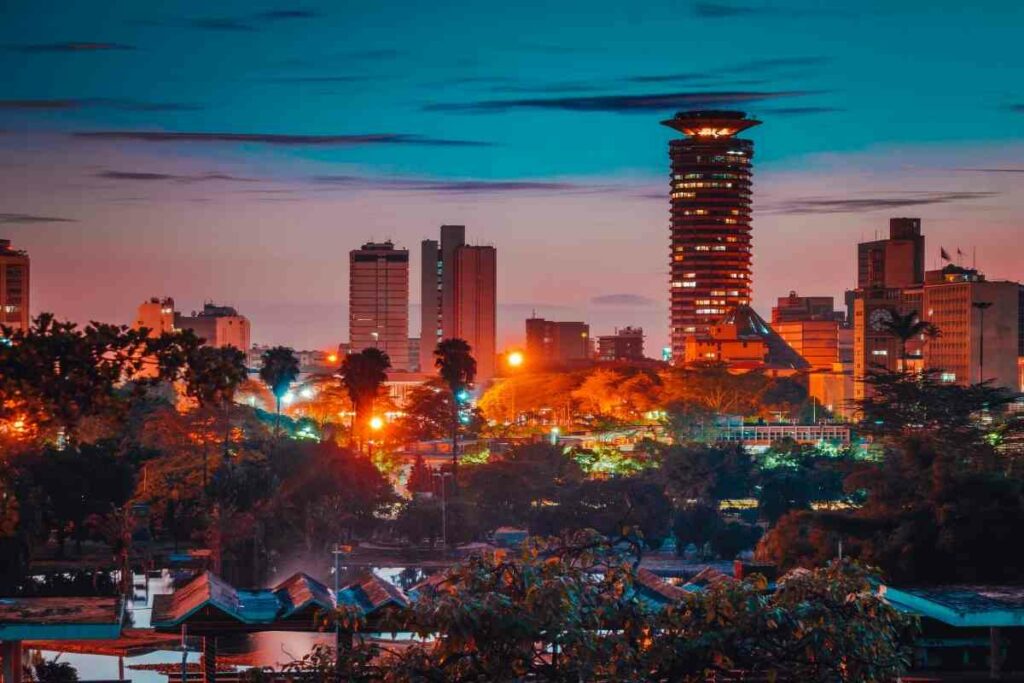

Taxis throng the club entrances, and you hop easily from one club to another.
The clubs play all kinds of music, including gengetone, a local hip-hop rendition. Promoters and owners also line up international artists to perform at their venues, attracting huge crowds.
You can not visit the city and fail to take some ‘nyama choma,’ Swahili, for roasted meat.
Almost every joint in Nairobi serves it together with ‘kachumbari,’ a tomato-onion salad. The sumptuous meat is usually medium rare to well done, with a kilo of beef going for as low as US$10.
City revelers are quite the guzzlers; it is difficult to find space during happy hour.
The bars stock both local and foreign drinks. We recommend you take one Tusker for the road, the favorite local beer. (Don’t drink and drive, though). The beer prices start from around US$3 to$15, depending on the establishment.
Security inside the clubs is always guaranteed, and bouncers are quick to throw out any rowdy revelers.
But keep an eye on pickpocketers who frequent even A-class establishments. Never go to the clubs alone, as you become an easy target.
Conclusion
If you plan to visit Nairobi, your camera should be the first thing you pack.
There is so much the city has to offer, and these ten amazing venues and activities are just the tip of the iceberg.
To maximize your traveling itinerary, visiting several venues in a day would be best.


